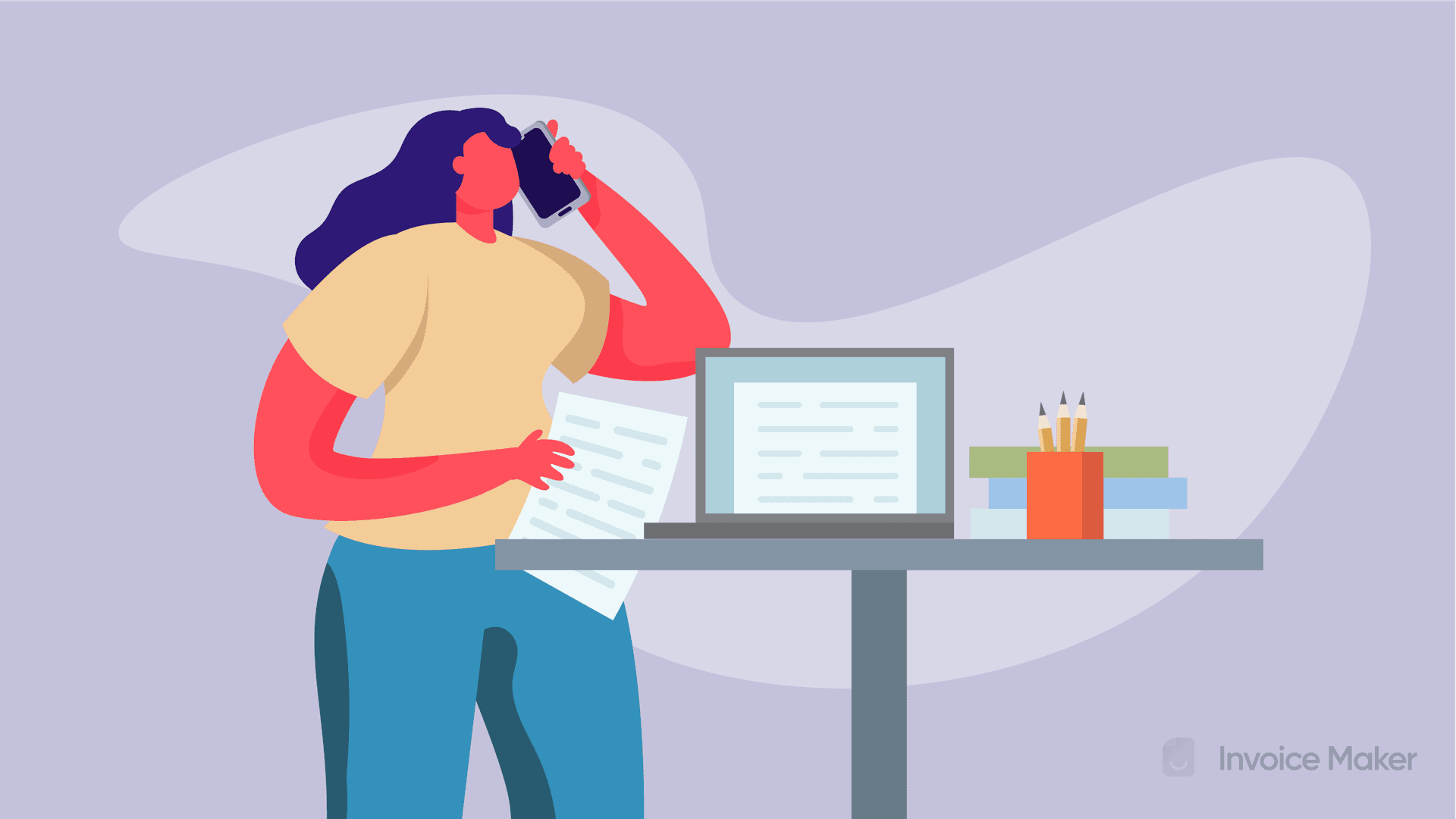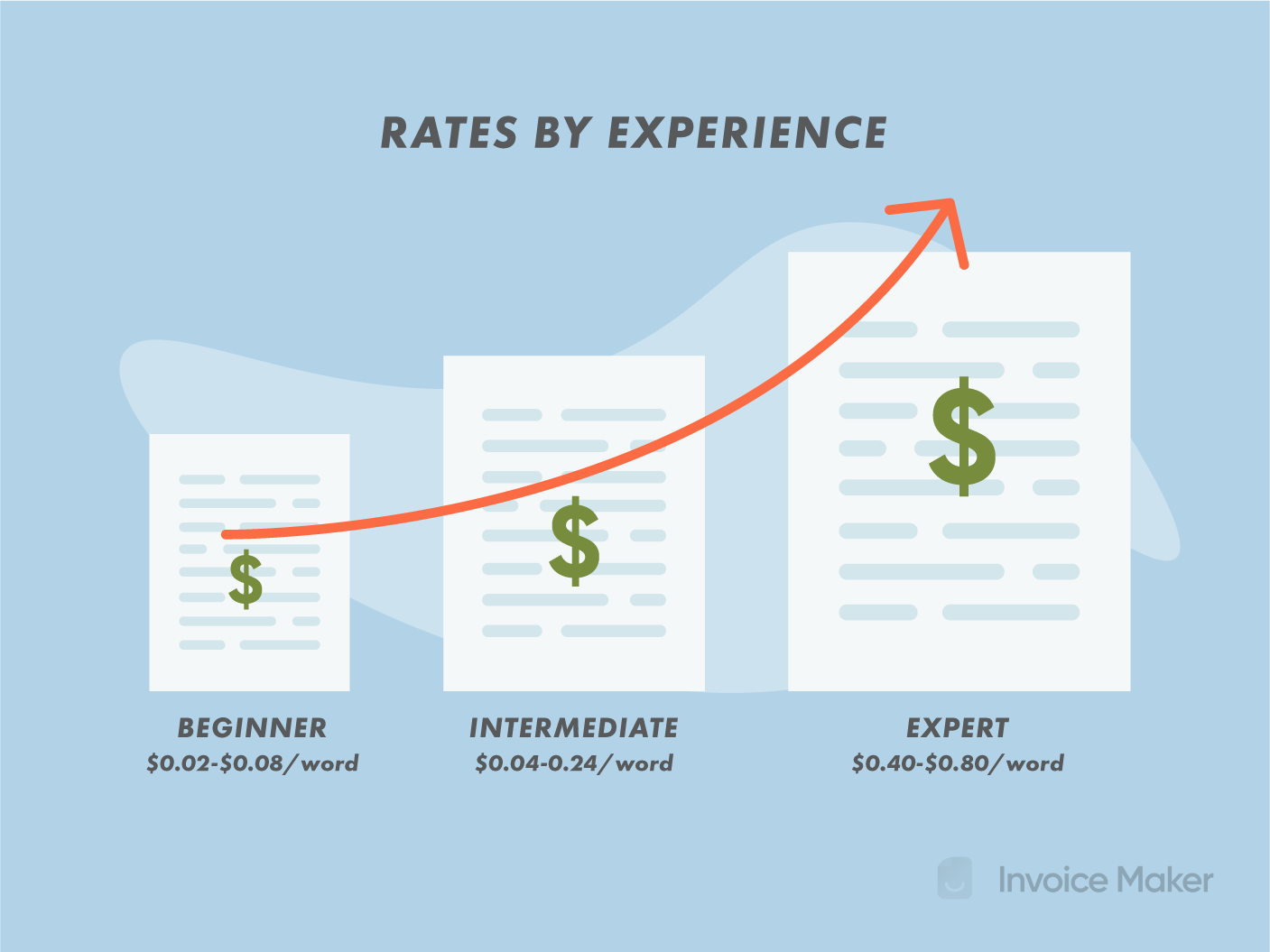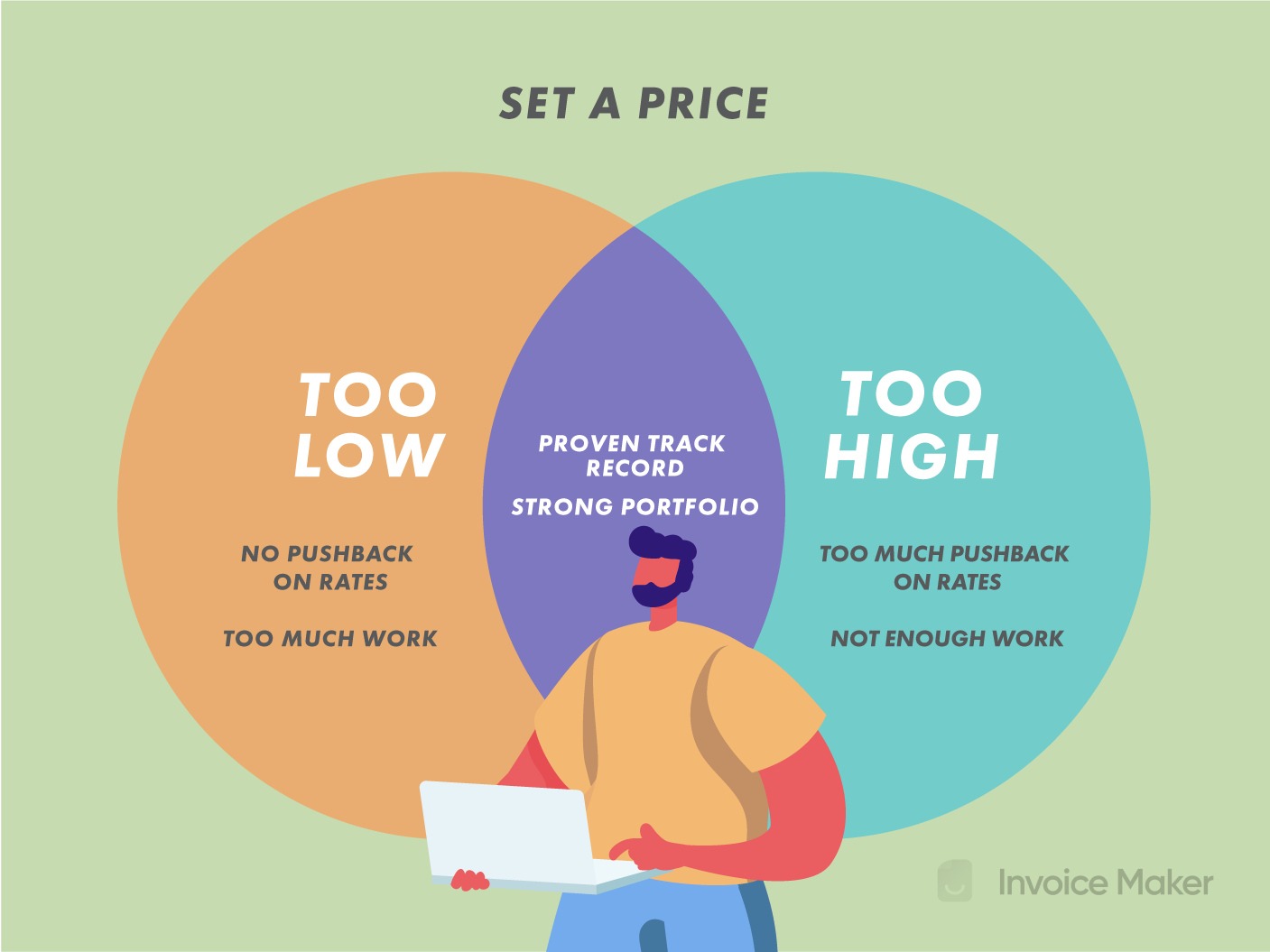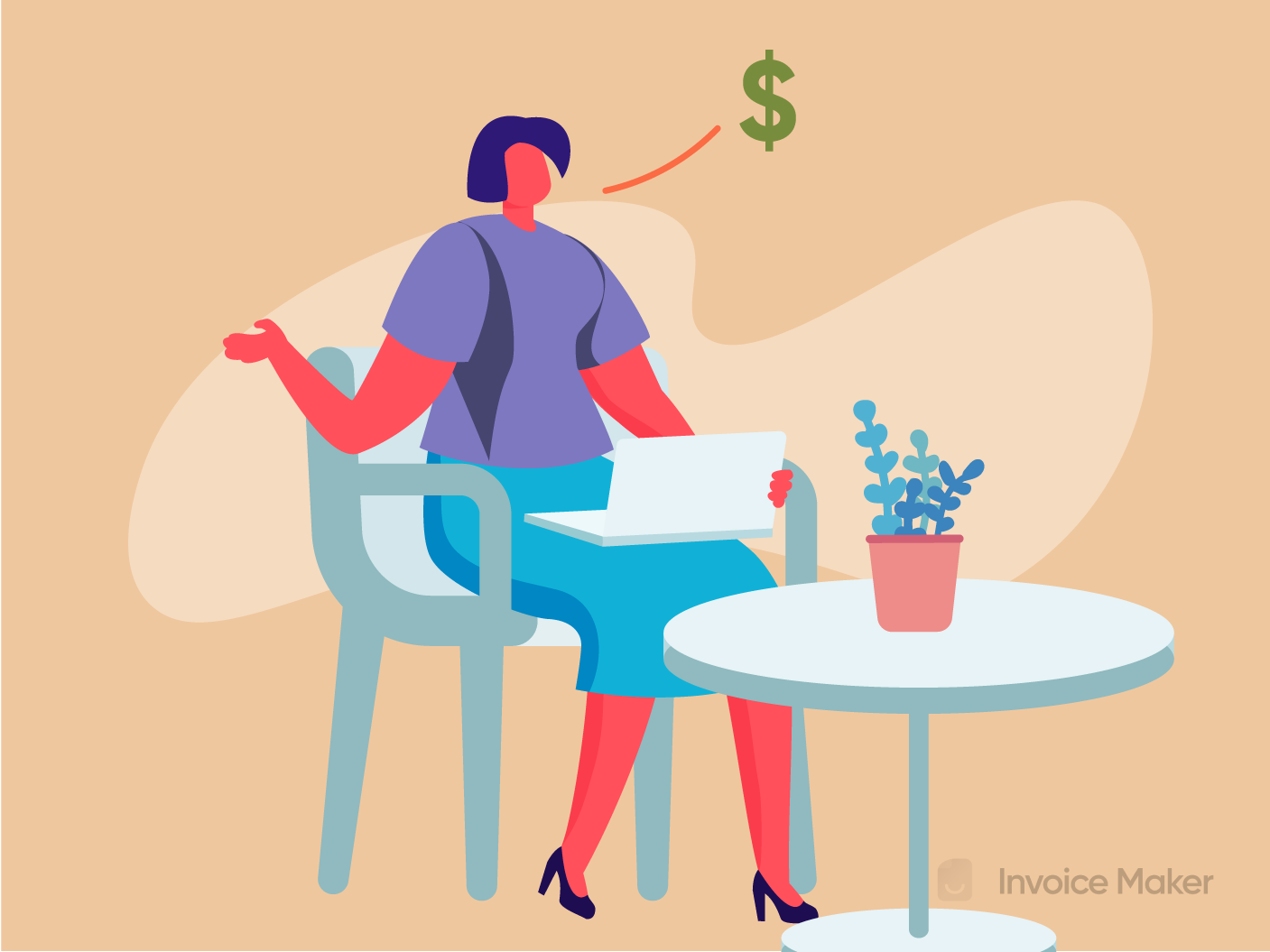How Much to Charge As A Freelance Editor

Freelance editors perform a vast range of work, from proofreading and line editing for clarity to telling a straightforward, coherent brand story through tone, voice, and word choice. Editors work on every type of written work, from email marketing to books. Your rates will depend on your experience (in both years and projects) and the scope of work you perform. Read on to ensure you’re pricing your editorial services competitively without leaving money on the table.
Make a Free Invoice NowHourly Freelance Editor Rates
The Editorial Freelancers Association, which publishes pricing data generated by member surveys, offers hourly rate ranges based on the type of editing performed. According to their data, copyediting services range from $36-$50 hourly (with literary work on the low-end and medical/STEM content on the high end), while developmental editing goes for $46-$70 an hour Proofreading ranges from $31-$45 an hour.
When establishing an hourly rate, it’s wise to consider the value of specializations. Generalists need to come up with a few rate options for different types of work and different types of clients. Always charge a national or global brand more for editing marketing content than an author for editing a manuscript when the scope is comparable.
Project-Based Editor Rates
When charging per project, it’s standard to base rates on a per-word or per-page basis. For example, if a project rate for developmental editing on business or sales content is set at $0.05 per word, charge $50 to edit a project 1000 words long.
An excellent place to start is deciding on a baseline per-word rate with the flexibility to price up or down for different types of projects. This rate represents the total amount of labor more accurately than an hourly rate, which punishes efficiency and rewards a slow process. Per-word rates start at $0.02 per word for copyediting fiction and climb as high as $0.08 per word for editing marketing or promotional materials.
Editors with a niche specialty can consider having a menu of services (internally or otherwise) for their work. For example, if someone frequently edits white papers, they might land on a flat rate for each white paper. However, there is always the risk of ballooning scope with flat rate pricing.
Experience-Based Rates

One of the reasons editorial rates have such a wide range is they are highly dependent upon experience. Unlike writing—which can always be “edited up” to a high standard—editorial work is the last creative pass a project receives before being seen by a client or a customer. For this reason, experience is prized and well-compensated in the editorial field.
Beginning Editor
New editors can expect to start on the bottom of the pay scale as they prove themselves and build a portfolio. $0.02-$0.08 per word is a reasonable starting rate, depending on the type of content.
Intermediate Editor
Junior editors have some experience but haven’t yet built a robust portfolio or taken on high responsibility and complex projects. At this career stage, editors can charge about $0.04-$0.16 per word for copyediting and anywhere from $0.06 to $0.24 per word for developmental editing.
Experienced Editor
With significant years of experience and a portfolio and contacts to go show for it, an editor can charge a premium rate: up to $0.40 per word for copyediting and up to $0.80 per word for developmental editing. Not every experienced editor will reach the top end (and a few will surpass it), but it’s a good goal to aim for.
Factors that May Affect a Rate
Editorial rates tend to reflect the overall price point of the deliverables. Suppose an editor’s niche is working on literary fiction. In that case, the amount of money everyone on the publishing team makes (from the writer to the proofreader to the designer) is low relative to editing marketing materials for a global brand.
A rate will also be affected by an editor’s experience level, the quality of their network, and the geographic market their clients are located. A tech specialist with a client base out of San Francisco can charge more than someone who specializes in developmental editing for academics in a rural area.
The most significant factor affecting how much an editor can charge is how much they’re willing to ask for. Editors must advocate for themselves financially and be unafraid to lose business that won’t compensate them at the level they deserve. This confidence will lead to a client base that values the editor’s keen eye, big-picture thinking, and unique ability to shape a narrative.
Tips for Setting a Rate

Set prices slightly higher than desired and dial back from there. A prospective client is far more likely to negotiate a price down than they are to offer more money than proposed. Don’t be afraid; always leave some wiggle room to come down in price during negotiations.
How to Know if a Rate is Too Low
If an editor never gets any pushback on pricing, they’re likely pricing too low. Because clients’ budgets are not transparent, they’ll never know how much the client was willing to pay you unless they take some risks with confident pricing.
Too much work is also a sign that rates can increase. Whether a business model is high-volume or exclusive, having more work than is possible to complete places a cap on earnings, and is usually an indication that rates can increase a bit without disrupting the inflow of new work.
How to Know if a Rate is Too High
On the other hand, it’s a red flag if an editor always gets pushback on pricing. Pricing is typically much less emotional for clients than solopreneurs, so they are likely to communicate directly if they are happy with an editor’s work but not their rates.
A lack of work is another sign of pricing out of a market. So is a high rate of positive client interactions without repeat business.
How to Negotiate With a Client

Negotiating rates as an editor is essential. After some time on a project or with a client, an editor’s editorial voice has a driving effect on the deliverables’ continuity, tone, and brand voice. This fact means the editor is not expendable and will often be worth a rate increase for clients to keep them onboard.
When to Increase a Rate
A yearly global rate increase of 5-10% is a reasonable hike that keeps up with cost-of-living additions and growing expertise. Let clients know in an initial contract that rates increase annually, so there are no surprises for either party.
Consider a raise every couple of years or after working on a significant project. If the editor brings more value to the table that deserves more compensation, they need to negotiate with their client to raise their rate to reflect their growing value.
Often, an editor signs on to a project at one rate, and then the project shifts in a way neither party accounted for in the initial contract. When the scope of work increases, editors should increase their rates by letting their clients know they’ll be billing more hours or by increasing their per-word or per-project rate.
Editors who bill hourly (and intend to continue doing so) want to ensure they raise their rates as their efficiency increases. This way, they aren’t charging less as they get faster at completing their work. To do this, track the time it takes to edit each page, keep a running average of the number of pages edited per hour, and peg an hourly rate to a given number of pages.
Knowing Your Value
As a freelance editor, you have a skill set that is invaluable to many types of work. Knowing the industry standards for various editing work allows you to learn and advocate your value as an editor, and shape your business and client list toward the kind of work you most desire.


